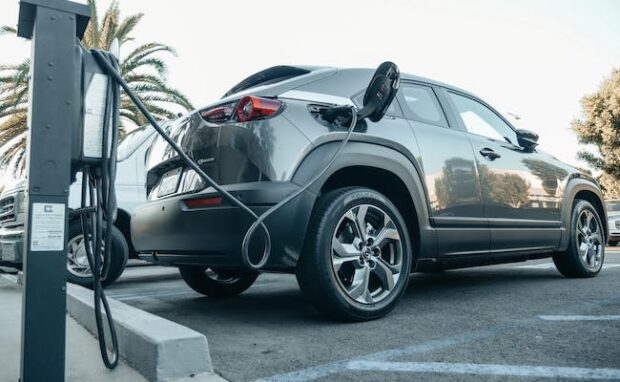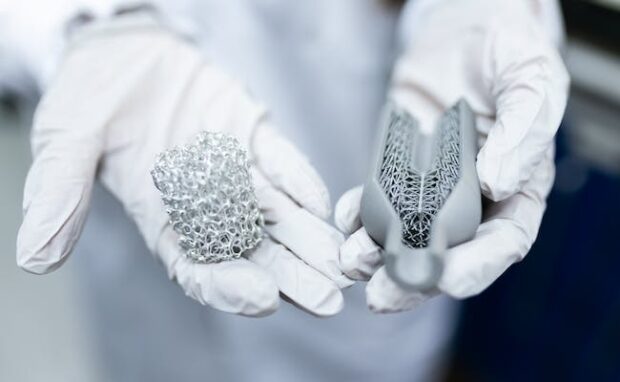Ultrafast battery charges in five minutes

The US Department of Energy funded research that created a revolutionary lithium battery that fully charges in five minutes. Cornell University conducted this study and found an alloy that makes this energy efficiency possible. Their experiment is still too impractical for real-world use, but it may lead future researchers to make better electric car batteries.
More people are riding electric vehicles, but many are still skeptical about replacing their gas automobiles. Some of the biggest concerns are the lack of range and long charging times. People fear EVs might not have enough energy for long trips and charging takes too long. Fortunately, they might reconsider if these cars recharge in five minutes!
This article will discuss how Cornell University experts created this amazing ultrafast battery. Later, I will share an artificial intelligence program that may improve and realize this project.
How did they make the ultrafast battery?

Dean of Cornell’s College of Engineering Lynden Archer and his research team looked for material for this ultrafast energy storage device. It needed the right combination of electrical and material properties to accomplish the task.
Eventually, they chose Indium, a soft, malleable, and shiny metal. Manufacturers use Indium to create Indium-tin oxide that coats solar panels and touchscreen displays.
People could produce batteries with this substance at an industrial scale and at a reasonable price. More importantly, it has an extremely low migration energy barrier.
The DeBrief says it “sets the rate at which ions diffuse in the solid state.” Also, Indium has a decent exchange current density, “which is related to the rate at which ions are reduced in the anode.”
“The key innovation is we’ve discovered a design principle that allows metal ions at a battery anode to freely move around, find the right configuration and only then participate in the charge storage reaction,” Archer said. “The end result is that in every charging cycle, the electrode is in a stable morphological state.”
Archer used these traits to create a lithium battery that charges in minutes. Moreover, people can replace them thousands of times without losing significant capacity.
You may also like: AI Glasses for the Speech-Impaired
This type of battery could eliminate range anxiety if adapted to electric vehicle designs. “Range anxiety is a greater barrier to electrification in transportation than any of the other barriers, like cost and capability of batteries,” explained Archer.
He and his colleagues admit that their ultrafast battery is too heavy for any electric vehicle. Still, Archer believes it could guide others into making a more practical one.
For example, another team might look for other alloys that have Indium’s characteristics. Eventually, they could discover a lighter alternative to put ultrafast batteries into every EV.
How can AI help realize this ultrafast battery?

Perhaps we could use Google DeepMind’s latest AI program to find an alternative to Indium. A previous Inquirer Tech article says it simulates combining substances and rating their stability.
DeepMind used data from the Lawrence Berkeley National Laboratory (LBNL) and other sources to train its artificial intelligence. It calls the program the Graph Networks for Materials Exploration or GNoME.
GNoME uses two deep learning models that represent atoms and bonds in a molecule as a graph. The first uses known crystal structures and substitutes elements with others to produce candidate structures.
On the other hand, the other uses the candidate’s chemical formula or composition to rate its stability. Then, it filters the candidate pool and evaluates them with quantum mechanics simulations.
Later, it returns the information to the model to complete an active learning training loop. DeepMind’s materials discovery leader, Ekin Dogus Cubuk, said the program found AI materials “which have proven to be difficult for human scientists.”
You may also like: Microsoft AI discovers new battery material
More importantly, this artificial intelligence could generalize beyond its training, further improving its results. “If we really want to use these tools for discovery, we want to look where we haven’t looked before,” said Keith Butler, a professor of computational materials chemistry at University College London.
Of course, we want AI materials to work in real life. However, these tools usually don’t explain why they made specific combinations. “If you can ask the model, ‘What is it that made you make this decision?’ That is where you can get new knowledge,” Butler added.
Olexandr Isayev, a chemistry professor at Carnegie Mellon University, said some types of scientific experimentation are “really amenable for automation with machine learning and AI.” Also, he added, “Software plus hardware” is where “the next advances in the sciences are going to be.”
Conclusion
The Cornell University created an ultrafast battery that recharges in five minutes. However, it uses Indium, which is too heavy for electric vehicles. Nonetheless, its dean, Lyndon Archer, is satisfied with the results.
“That is where my satisfaction comes from, that there’s a general principle at work that allows anyone to design a better battery anode that achieves faster charge rates than the state-of-the-art technology,” he stated in the Cornell Chronicle.
Learn more about this revolutionary ultrafast battery in the Joule journal. Also, check the latest digital tips and trends at Inquirer Tech.